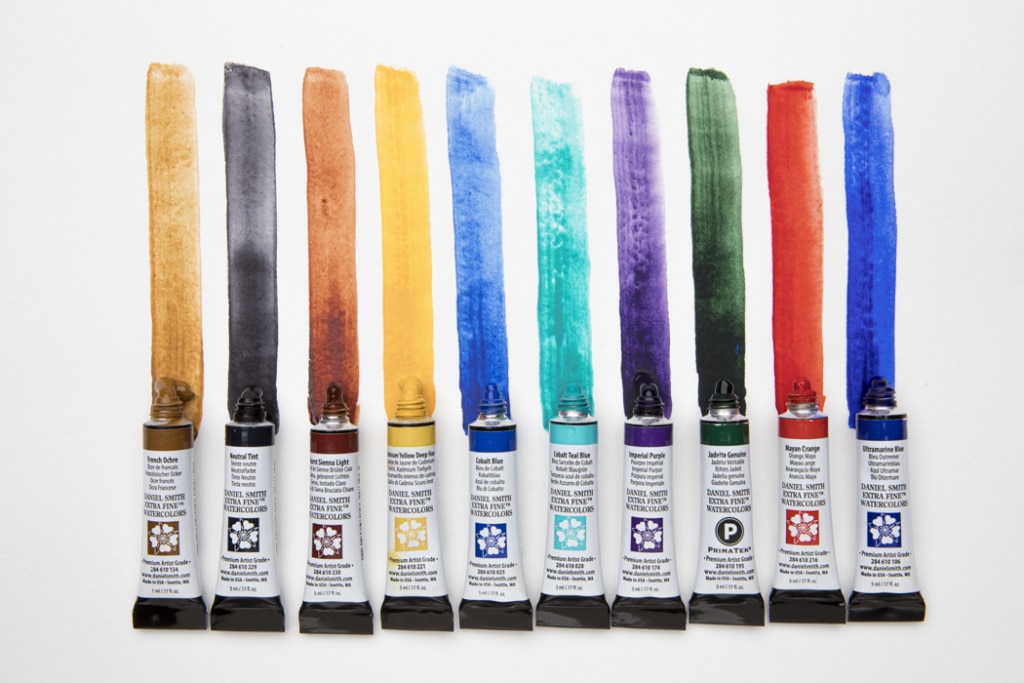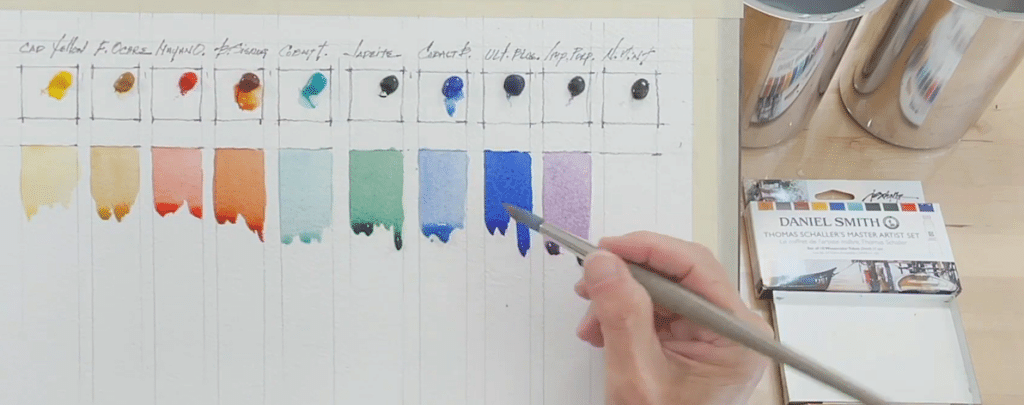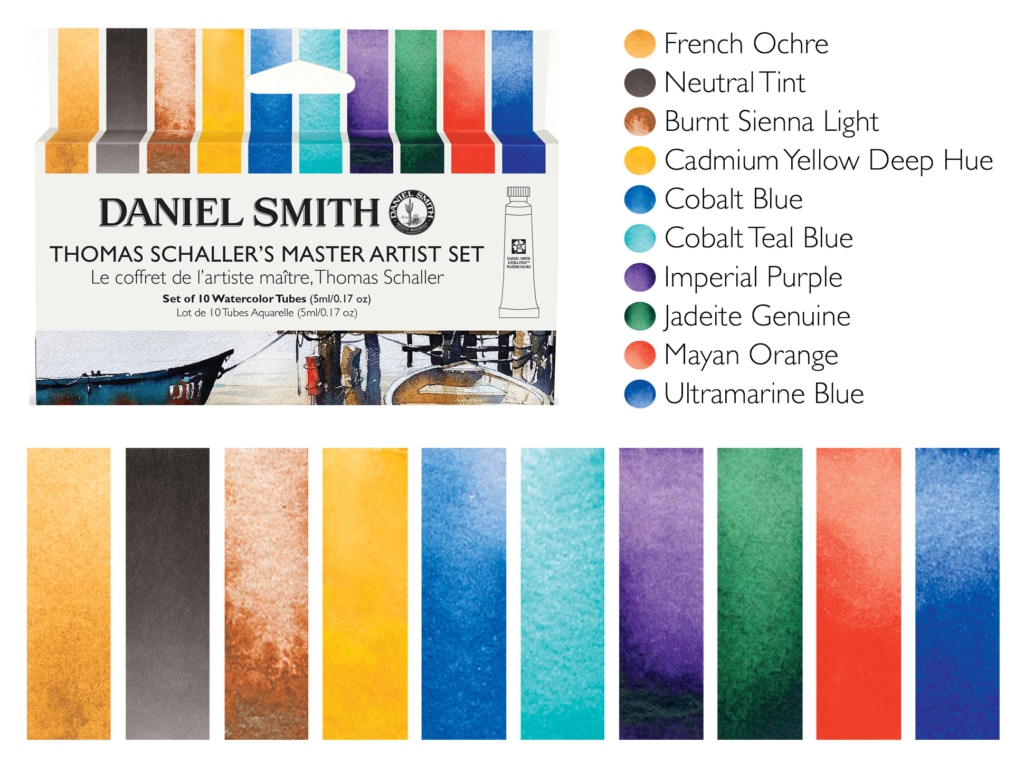“DANIEL SMITH Extra Fine watercolors are enhancing the way I paint. The beautiful natural pigments sink in the valleys of the paper and float with transparency and luminosity with proven lightfastness. They are better than any other brand – they changed my life and how I painted.”
As a top architectural artist, Thomas W. Schaller uses DANIEL SMITH Watercolors in his paintings to create the contrast of “a built world and a natural world.” He likes the sophisticated colors, which allow him to tailor his mixes and blend on paper for endless opportunities. He first started using DANIEL SMITH in 2011 after being invited to teach at the headquarters in Seattle.
Thomas usually works with 12-14 colors on his everyday palette, so the challenge to pick only 10 of his favorites to create this Master Artist Set was daunting. He reworked the selection several times to find the perfect mix of impactful warms and cools for capturing light and dark. He chose the Mayan Orange versus several other reds for example, because it’s a “beautiful, versatile color with a cool-down trait.” He adores Imperial Purple and often employs it for strong contrasts. His favorite is Cobalt Teal Blue. “It draws out different colors from everyday life. It can be shade, skies, skin, water, stonework and so much more. The blue-green gives me so many options for expression.” Each color in this set has its own individual strength, but Thomas believes this palette is well-rounded and offers a wide variety of color mixes, encouraging unique expression from each artist.
Thomas Schaller Master Artist Set includes:
- French Ochre
- Neutral Tint
- Burnt Sienna Light
- Cadmium Yellow Deep Hue
- Cobalt Blue
- Imperial Purple
- Cobalt Teal Blue
- Jadeite Genuine
- Mayan Orange
- Ultramarine Blue
Experiment with contrast
Challenge yourself with this set to discover all the contrasts you can make. Don’t focus on the outcome, but focus on being in the moment to uncover the depth that this set allows. Start with light – how light can you make the colors? How dark can you make them? What happens when you mix your darkest and lightest tones? Next, work on creating your warmest palette versus your coolest. Experimenting in this way will help you create contrast by only use of color, which will serve you well in painting. Experimentation can be a great way to connect with other creative souls, too. Thomas suggests sharing what you learn on social media – a community to share with is most rewarding.
Advice for aspiring artists
Thomas advises artists to listen to your own voice first and not rely too much on practical advice from the experts. “Spend time learning how to uncover your answers – because you have the answers already,” he says with a smile. “Observation of the real world can be an inventive opportunity to gather elements to use in the creation of your dream world. I hope to always inspire others to tell their own story.” He also believes it’s not necessary to load up on a ton of supplies, but rather choose a few quality materials, such as a good brush, nice paper, and of course, quality pigments!
From architect to artist
His early days as an architect left Thomas yearning to express himself more. He was determined to break out of an “uptight architect” role and give himself more creative moments. This was the beginning of a career as an award-winning artist, where he discovered others were very appreciative of his unique ability to combine art with architecture, with a deep-rooted appreciation of nature woven in.
Thomas is lead by the narrative in his paintings. He describes it as beginning with a conversation that sparks an emotion or a reaction. “My artistic blood pressure gets a feeling and I need to express it on paper and share it with others. He has a unique passion for incorporating both the seen and unseen into his work. He enjoys working with subject matters that are in conflict – the challenge is an opportunity to create balance within the painting.
“I’m on a quest to discover my best work by challenging myself to let go of old ways, which were diluting potentials and serving only as a security blanket.” Thomas describes himself as an introvert who loves redesigning the world in his sketchbooks, at home with his dog Otis. He had to overcome public speaking fears by connecting to the thread of liking people. He had spent ten years teaching all over the world, and as much as he missed it, he had a framework to write and connect online during the pandemic. “I thank my mother for saving my very first watercolor painting. I didn’t know then that I would come back to watercolor as the medium I love most.”










